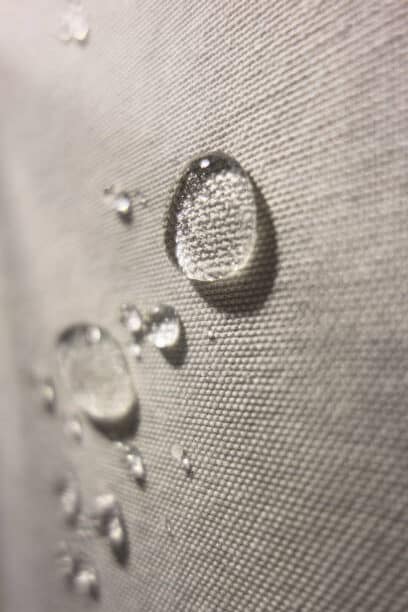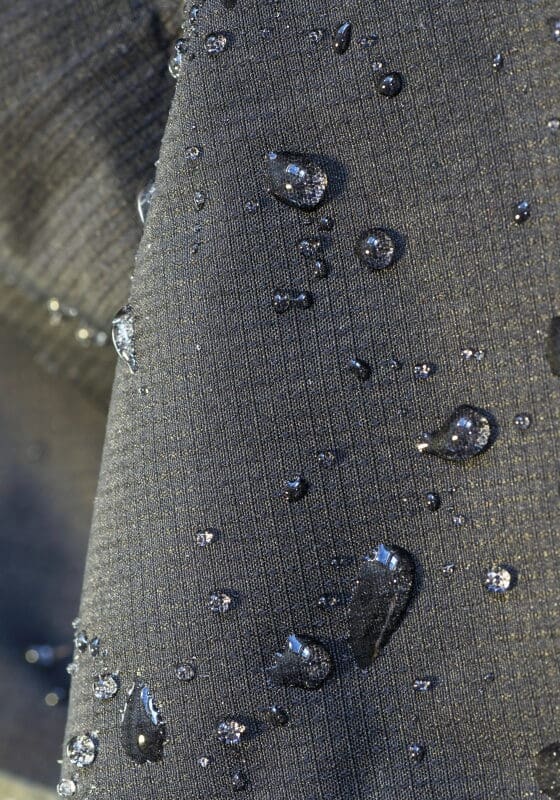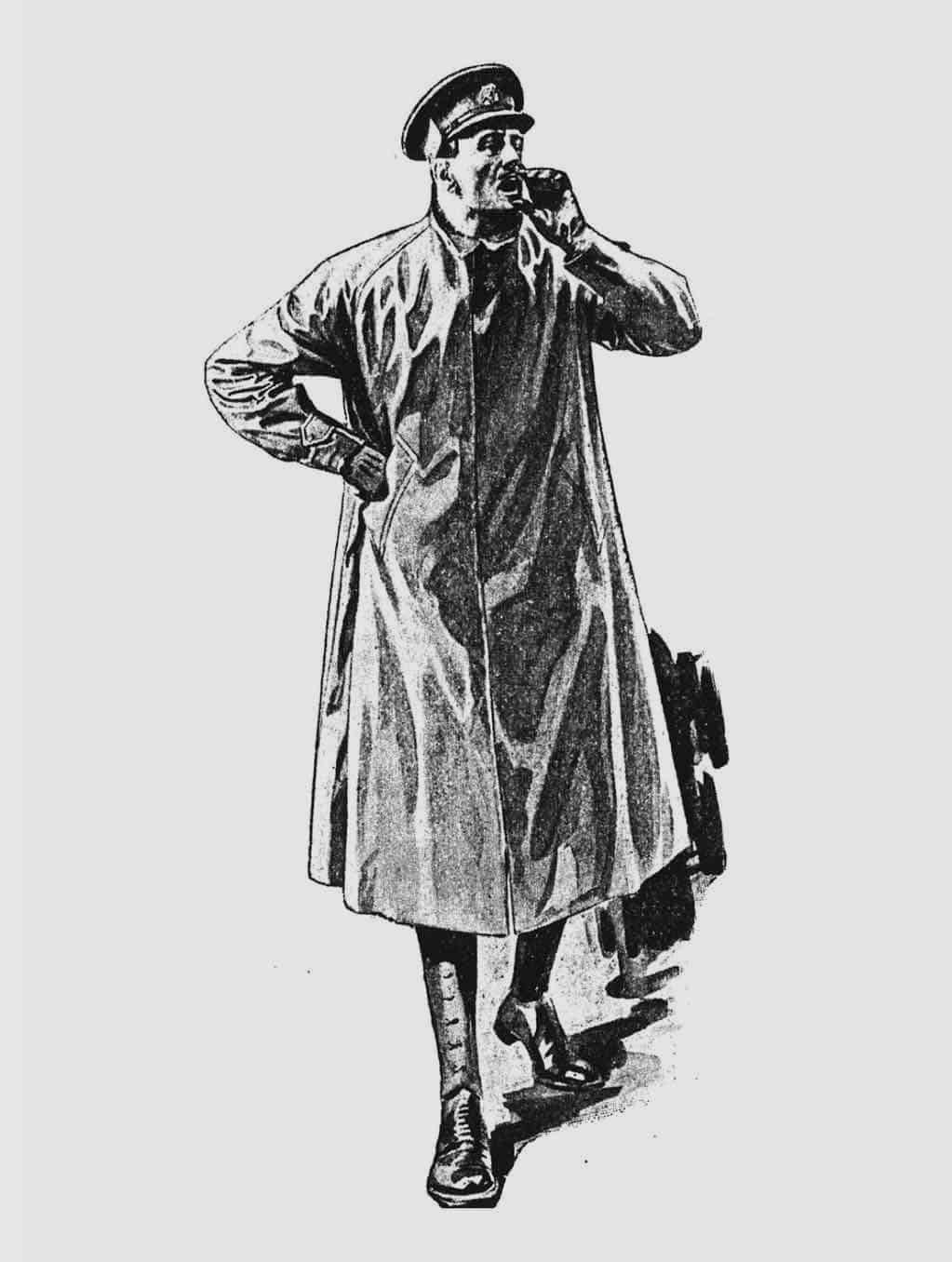What is the difference among water-resistant, water-repellent and water-proof clothing?
Discover the history and the differences among water-repellent, water-resistant, and water-proof textiles and clothing
It is common to hear people mixing up the words “water repellent”, “water resistant”, and “waterproof” when talking about garments.
Despite their shared association with water, these words encompass distinct meanings. Understanding these terms is crucial when making clothing purchases, particularly for outdoor wear, where protection from the elements is paramount. Failing to discern the differences between these terms can lead to expensive errors. Making informed choices relies on understanding these descriptions. To distinguish between these terms, one must grasp their meanings first.
The terms "water-repellent," "water-resistant," and "waterproof" are often used to describe the ability of materials or products to withstand water exposure to varying degrees. However, they represent different levels of protection. Here's an explanation of each term:
Nr. 1
Water-Resistant
"Resisting though not entirely preventing the penetration of water" | Water resistance represents the most basic form of water protection among the three main categories. While it can partially resist water penetration, it does not provide complete protection. Nylon and polyester are common water-resistant fabrics, and their water-repellent properties are attributed to their tightly woven structure. The denser the fabric, the slower water can seep through, although it doesn't guarantee permanent dryness. Water-resistant products are intended to endure light water contact, like rain showers, light rain, or snow flurries, but they are not capable of withstanding prolonged exposure to harsh weather conditions.
Nr. 2
Water-Repellent
"Having a finish that resists, but is not impervious, to water" | Water-repellent represents a higher level of water protection compared to water resistance. It exhibits enhanced resistance to water penetration, primarily achieved through surface coatings or treatments. Water-repellent products offer superior protection compared to water-resistant ones, thanks to the use of more effective fabrics. When water encounters these fabrics, they cause the water to bead up rather than allowing it to pass through. As a result, water-repellent materials are not easily penetrated by water. To ensure that the fabric used in outerwear repels water, manufacturers apply a Durable Water Repellent (DWR) coating to the garment's exterior shell or infuse it into the fibers of the fabric. DWR is a specialized chemical engineered to create a water-repellent effect when applied to the fabric's surface.
Nr. 3
Waterproof
"Impervious to water" | Waterproof materials or products are designed to prevent water from passing through them entirely. They offer the highest level of protection against water and are typically used in situations where complete water resistance is required. Waterproof items create a barrier that keeps water out, even under heavy rain or submersion in water. These items are ideal for activities where keeping belongings or yourself dry is crucial, such as in rain jackets, tents, or dive suits. Most waterproof outfits are usually: treated with DWR or laminate, sewn using sealed or heated seams, layered with polymer to cover pores, made with waterproof zippers and fasteners.

It's important to note that even though a garment may be labeled as water-resistant or waterproof, the level of protection can vary depending on the material's quality, construction and treatment. But how is it tested and measured? Here are the most common methods:
Nr. 1
The Hydrostatic Head Test
The Hydrostatic Head Test assesses a material's water repellency by placing it under a double open-sided cylinder and gradually filling it with water. The results are measured in millimeters, indicating the amount of water the material can withstand before seeping through. Higher ratings signify better water repellency, and vice versa. Familiarizing yourself with these ratings can help you choose the appropriate outerwear. Water-resistant clothing typically withstands 1,500mm to 5,000mm of water pressure, while waterproof clothing should have a rating of 5,000mm and above. Understanding these Hydrostatic Head Test ratings will aid you in finding outerwear that best suits your water repellency needs. For example, when a garment has a waterproof rating of 10,000 mmH₂O, it means it can withstand the pressure of 10 meters of water. This is why many mountaineering and skiing apparel advertise their protection as waterproof, as it offers the highest level of water protection possible.
Nr. 2
The Spray Test
This test method measures the resistance of fabrics to wetting by water. It is especially suitable for measuring the water-repellent efficacy of finishes applied to fabrics. Water sprayed against the taut surface of a test specimen under controlled conditions produces a wetted pattern, whose size depends on the relative repellency of the fabric. Evaluation is accomplished by comparing the wetted pattern with pictures on a standard chart. (Source: AATCC)
Nr. 3
The Rain Test
This test method measures the resistance of fabrics to the penetration of water by impact, and thus can be used to predict the probable rain penetration resistance of fabrics. It is especially suitable for measuring the penetration resistance of garment fabrics. With the instrument, tests may be made at different intensities of water impact to give a complete picture of the penetration resistance of a single fabric or combination of fabrics. A test specimen, backed by a weighed blotter, is sprayed with water for 5 minutes under controlled conditions. The blotter is then reweighed to determine the amount of water which has leaked through the specimen during the test. (Source: AATCC)

...Now that you know the differences and how they are tested and measured, you're missing just one thing: the history of it. So when did water-resistant, water-repellent and water-proof clothing started? And how did it evolve over time?

The origin of waterproof clothing is quite uncertain. One of the earliest examples of waterproofing can be traced back to The ancient Egyptians and Mesopotamians used bitumen (a naturally occurring tar-like substance) to waterproof their boats and buildings. Some claim that aboriginal Americans were the first, true water proofers, as they pasted ‘India rubber’ (aka latex, aka natural rubber) extracted from trees onto garments, making them waterproof: a technique that was soon copied by the Spanish Conquistadors too, who understood its potential and started using it to coat their boots. Others say that the first attempts to achieve water-repellent garments date back to the 15th century, when sailors tried to impregnate their clothing with linseed oil, wax, or animal fat – there are no records proving the success of their experiments though.
Officially speaking, the first waterproof fabric was created and patented in 1823 by the Scottish chemist Charles Macintosh, in England, by using natural rubber dissolved in coal-tar naphtha for cementing two pieces of cloth together – the ‘mackintosh’ garment was named for him. This process was innovative, it was made by sandwiching a layer of rubber between two layers of fabric, but it had many flaws: the manufacturing process was dangerous, rubber smelled bad, and the fabric was not comfortable (the garments became stiff in winter and sticky in hot weather).
However, the breakthrough year was 1843, when Thomas Hancock patented the process of ‘vulcanization’ (natural rubber is heated and mixed with sulfur in controlled conditions), which stabilized the material as never before: the fabric was coated with rubber, making it waterproof and more durable.
With advancements in chemistry and materials science during the 20th century, there was an explosion in the use of synthetic material; for example, PVC and various types of synthetic rubbers became popular choices for creating waterproof fabrics and coatings. But that’s not it…
…The 20th century saw the birth of some chemicals that would radically change the industry: PFAS or “Forever Chemicals”.
Per- and polyfluoroalkyl substances (PFAS) are a group of man-made chemicals that have been used in various industries due to their unique properties, including resistance to water, grease, and heat. Their application in clothing can be traced back to the mid-20th century, during the 1940s, when companies sought to enhance the performance of fabrics and textiles. Textile manufacturers began incorporating PFAS, such as perfluorooctanoic acid (PFOA) and perfluorooctanesulfonic acid (PFOS), into fabrics to create water-resistant and stain-repellent clothing. In the 1980s and 1990s, the use of PFAS in clothing significantly expanded. Brands and consumers were drawn to the convenience and practicality of garments that could resist spills, stains, and water. Popular applications included again outdoor clothing, sportswear, and workwear.
About Manteco, Italian premium textiles and circularity since 1943
After decades in the fashion world, in 2018, we have created the Manteco Academy project, through which we give webinars, in-person lessons and workshops on eco-design, circular economy and sustainability to numerous fashion schools, technical universities and brands worldwide. Thanks to this educative commitment and our heritage, we are often invited as guest speaker at events, panels, podcasts and conferences about sustainable fashion and circular economy.

